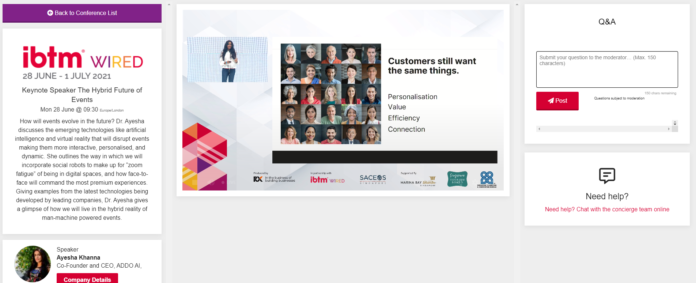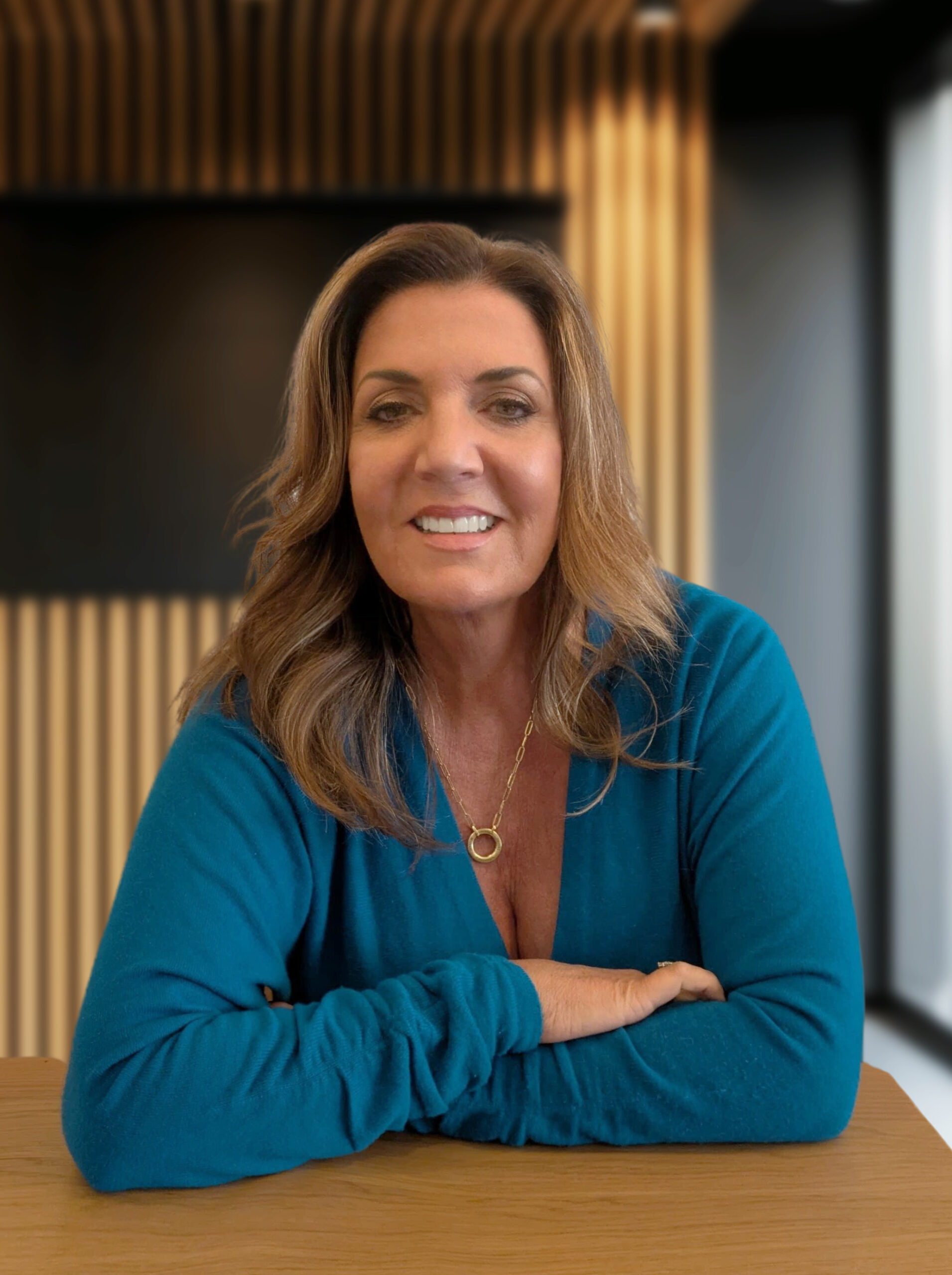IBTM Wired’s closing keynote on Day One, Dr Ayesha Khanna, Co-Founder and CEO of ADDO AI, has highlighted the critical role AI will play in events going forward.While customers still want the same things as pre-pandemic – personalisation, value, efficiency and connection, these will be delivered through enhanced AI and technology made possible in part by the huge acceleration of digitisation as a result of the pandemic.
Khanna highlighted that in integrating AI and tech into the customer experience, it is essential to look deeply at the most important thing; customers and their business needs and how technology can help us better understand them.
With businesses such as Apple and Facebook investing heavily in AI technology, personalisation is becoming ever more sophisticated. For example, emotion AI uses tiny cameras to understand and interpret viewers’ emotions through their voice and pre-conscious emotional responses to ads. This builds a deeper profile of customers in order to personalise their online experience. This kind of technology has huge potential for the personalisation of events, allowing organisers to make them more bespoke, immersive and engaging than ever.
During her session, Khanna raised a number of points, including that AR technology is being tapped by brands including Apple as the ‘next big thing’ – this technology is going to be key in enabling planners to create more interactive, experiential and continuous events. Microevents could become a norm, using non-human influencers and/or chatbots to help maintain year-round engagement.
While AI is still quite piecemeal, there is a real opportunity to make virtual events totally immersive. It can be daunting and hard to know where to start, but Khanna makes the point that “You don’t need to be a technologist, but be open to new technology, be excited by it and be very responsible with it. Learn and embrace it!” The future of MICE events is undoubtedly human, but with the integration of exciting new technology.
Ali Turner, Managing Director of Eight PR and Marketing and Oscar Cerezales, Global Executive VP of MCI Asia Pacific, discussed what the industry trends are likely to be for the next six to eight months in the Asia Pacific region.
Cerezales made the point that certain destinations are more agile and adaptable, learning faster than the others. These are destinations that aren’t purely thinking in terms of when will be the recovery but rather thinking “What’s next”. They’re not just waiting to see what happens, they’re scenario planning and using those learnings to create partnerships and plan for a new future.
Asia Pacific in general is ahead of the other regions when it comes to recovery, thanks to a combination of culture – they’re quite pragmatic and tackle problems quickly and in a connected way. The governments think long-term and don’t see our industry as ‘tourism’ but more through the lend of economic and social development.
Looking to the future, more corporates and associations will follow a hub and spoke event structure which means that destinations aren’t being selected because of their value chain, but as a result of analysis of the end goal/s of an event and how they can help the organisation achieve that.
Delegates feel increasingly comfortable with a digital experience, but it’s not always enough. There will still be a good number of big events with large in-person attendance, but there will be more smaller hybrid events. You may have an activation of thousands of delegates, but you’ll instead of having 2,000 people in the same venue, you’ll have teams of 50 to 100 delegates all over the world.
Ultimately, the world is changing. There are no ‘new’ trends, just old trends that have been accelerated due to covid. To pull out one as an example, sustainability will be key, but the new reality means that destinations need to look at it more broadly than previously, especially in terms of legacy and social transformation. Destinations need to think about their value proposition and what is their role in the future of a hybrid world.
A cohort of masters students from the Lee Kuan Yew Centre of Innovative Cities, Singapore University of Technology & Design (SUTD), re-imagined what the industry would look like in 2023. Mr Poon King Wang, Director, Lee Kuan Yew Centre for Innovative Cities SUTD, and Asha Suresh, Ng Teng Fong, SUTD Scholar, explored the students’ trio of ideas to re-invigorate the MICE industry.
Talking through the students’ first idea, entitled ‘MICEpolis’, Suresh explained that it was borne out of the idea that in the future, collaboration between different industries and specialisms will be the key to success. Envisioned as an incubator for start-ups, ‘MICEpolis’ would build a community of venture capitalists, researchers and industry professionals all working together to put Singapore on the map. Suresh summarised it as “…an eco-system of various industry players and stakeholders collaborating to expand and scale their project to develop more interactive hybrid events to capture new audiences.”
Combining different industries was at the heart of the second concept, ‘Cruiseferences’. Re-thinking the traditional conference space, partnering with the cruise industry could pave the way to highly experiential luxury conferences. King Wang pointed out that events on cruise ships also have the advantage of being enclosed, risk mitigated, and socially distanced.
Merging the MICE sector with an industry that has seen amazing growth – the gaming industry, was the idea behind their final idea – ‘MICE mischief’. Providing a different way to network and do business with the added benefit of combating zoom fatigue, incorporating gaming into an event can bring a whole new dimension to the experience. “We’ve taken what was just functional and made it fun and frivolous. Once you make something fun and frivolous, you potentially find new experiences that could be profit making.”
During the last eighteen months, our sense of what is possible has expanded. When looking to the future, as King Wang points out, it’s important to consider not only the relationship between digital and physical, but also between MICE and other sectors, to determine how different industries can work together to create new and exciting possibilities.












